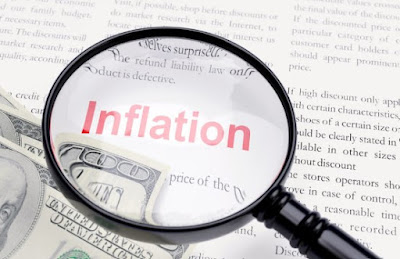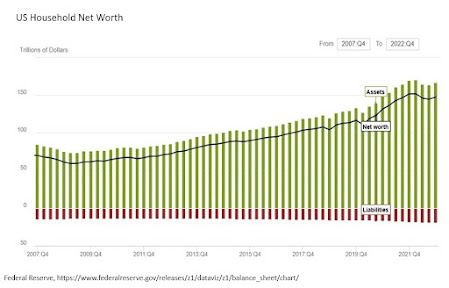The market meltdown is extending into the third consecutive week. Once again, the attempt to stabilize has failed, and bottom pickers have been punished.
It is easy to line up poor news developments, including IMF cutting world growth on the same day that the IEA warns of an extended glut in the oil market, the world's largest mining company projecting further declines in iron ore prices and poor earnings from one of the largest oil companies. At the same time, some keen observers, like former IMF chief economist Blanchard, that there is an irrational element ("herding") that is overwhelming the fundamentals. At the same time, there is concern that central banks ability or willingness to suppress volatility (via using their balance sheets) has been questioned.
It is not only the Fed's rate hike at the end of last year, but it is also the ECB's reluctance to act on the sense of urgency that Draghi had so diligently articulated, and the BOJ's operational tweaks in the fact of disappointing progress on the central bank's self-chosen inflation metric and an economy that is disappointing. It is also China, which is spending hundreds of billions of dollars (reserves fell by $108 bln in December) to prop up its yuan, which not so long ago, many heralded to eclipse the dollar and equity prices that by most conventional measures are overvalued.
Equity markets are broadly lower. The 1% decline of China's main bourses are on the small side of declines. The MSCI Asia-Pacific Index is off around 3%, as is the Dow Jones Stoxx 600 in Europe. Energy and financials are leading the way lower in Europe, and the Stoxx 600 is at its lowest level since December 2014. At this early hour, the US S&P is about 2% lower in electronic trading.
Core bond yields have fallen with the nearly nine bp decline in US 10-year Treasury yields pacing the move. Peripheral European bond yields are firmer, except for Spain, paradoxically, given little progress in cobbling a new government in Madrid. The market is also reducing its outlook for Fed policy though it never accepted the Fed's view that four hikes would be appropriate this year. The March contract implies an effective Fed funds rate of 38.5 bp in March (compares with an average effective rate of 36 bp presently). The implied yield on the December contract is 58 bp, the lowest since late-October.
Pressure has intensified on two currency pegs, the Hong Kong dollar and the Saudi riyal. Both pegs have survived stronger challenges, and we expect them both to remain intact. Still the HKD forward fell to their lowest level since 1999 and reports suggest that Saudi authorities are taking action to deter speculation against its peg.
The drop in US yields and the meltdown in equities spurred a yen advance that pushed the dollar briefly through the JPY116 level. Government officials quickly warned the market that they were watching the foreign exchange market closely. The dollar spiked back to JPY117; the buying dried up. Many think that government officials are not the same as BOJ officials.
Moreover, the government official who commented was not part of a press conference or a formal response to the market turmoil. Rather newswires suggested an official was peppered with questions when leaving a government building. In recent days, there has been some speculation that the BOJ may ease policy at the meeting later this month. We are skeptical.
We continue to suggest that it may be useful in the current environment to see the dollar at the fulcrum of a seesaw, with funding currencies, like the euro, yen and Swiss franc on one side and the asset currencies on the other, like the dollar-bloc, emerging markets, and sterling. Today, with the help of a stronger than expected employment report, sterling is trying to decouple from the asset currencies.
The unemployment rate (ILO) ticked down to 5.1% from 5.2%. This is the lowest since 2006. The claimant count unexpectedly fell (-4.3k vs. consensus of +2.8k), and the November count was revised lower (-2.2k vs. +3.9k). In the last three months of 2015, UK unemployment fell by 99k (to 1.68 mln), while employment has risen near 270lk to a record 37.4 mln.
The problem is that despite the apparent tightness of the UK labor market, earnings growth is slowing. Average weekly earnings rose 2.0% in the three months through November on a year-over-year basis. They peaked last May at a 3.3% rate.
The meltdown in global markets saw the December 16 short-sterling futures gap higher and rise to new contract highs (low in yields) before drifting a bit lower after the employment report. It is still trading above yesterday’s highs. Sterling itself initially slipped to new marginal lows near $1.4125 before rebounding. A move above $1.42, and ideally $1.4230 is needed to begin stabilizing the technical tone.
The euro is firm, but ahead of the ECB meeting tomorrow, where Draghi argue that the ECB is prepared to do more if necessary. An increasing number of observers recognize that it will be necessary. Some see a move in March though we suspect it may come closer to mid-year.
There are two highlights for the North American session: US CPI and the Bank of Canada meeting. We have noted that US core CPI trended higher last year despite the strength of the dollar and the weakness of oil prices. Given other market developments, this may not be a market mover, but over time, the firmer core inflation readings will likely influence Fed discussions.
The Bank of Canada is widely expected to deliver a 25 bp rate cut today. We are less convinced. Market conditions are not conducive and the Canadian dollar, while not in freefall, it depreciating quickly (5.4% this year already). If the Bank of Canada does move, Governor Poloz has indicated a willingness to consider QE. Ahead of the meeting, the Canadian do9llar is at new multi-year lows. The EIA oil and products inventory data will be released today and is expected to show a 2.75 mln barrel build in inventories. Oil prices are off nearly 2% today to new lows.
Tags: Bank of Canada,U.S. Average Earnings,U.S. Consumer Price Index







































